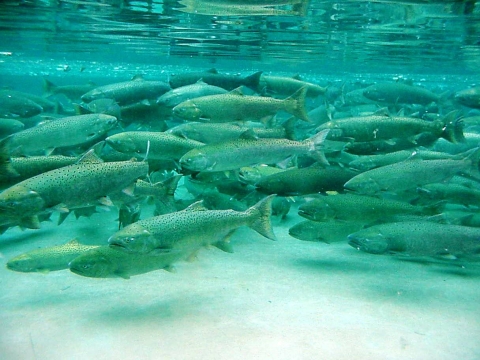About Us
We raise 200,000 steelhead, 400,000 spring Chinook, and 250,000 coho salmon for release into the Methow River. Salmon and steelhead must travel 574 river miles between the hatchery and the Pacific Ocean.
Our Mission
We exist to mitigate for the impact of Grand Coulee Dam on salmon and steelhead in the Columbia River.
Our History
When Grand Coulee Dam was built on the Columbia River in the 1930s, hundreds of miles of river were closed to salmon and steelhead. Three hatcheries were built to compensate for lost habitat and keep fish numbers high, and to serve tribal, commercial, and sport fisheries. Entiat, Leavenworth, and Winthrop national fish hatcheries still do this today. Over the past 75 years, our mission has never changed, but how we do our work has.
Check out our History page to learn more.
Other Facilities in this Complex
Entiat, Leavenworth, and Winthrop National Fish Hatcheries are mitigation hatcheries established by the Grand Coulee Fish Maintenance Project (1937) to compensate for anadromous fish losses above Grand Coulee Dam. All three produce spring or summer Chinook salmon, and our Winthrop hatchery produces steelhead.
As part of the Leavenworth Fisheries Complex, the Mid-Columbia Fish and Wildlife Conservation Office evaluates the hatchery production programs, provides technical assistance, and assists the coordination of operations and production. The Conservation Office cooperates with other Service programs, agencies, tribes, and entities using and managing aquatic species and their habitats in the mid- and upper-Columbia River Basin.





